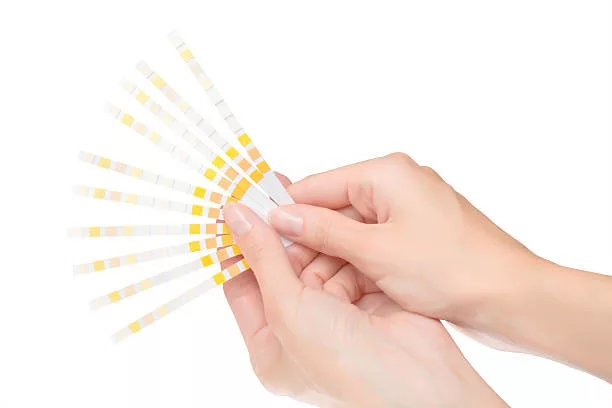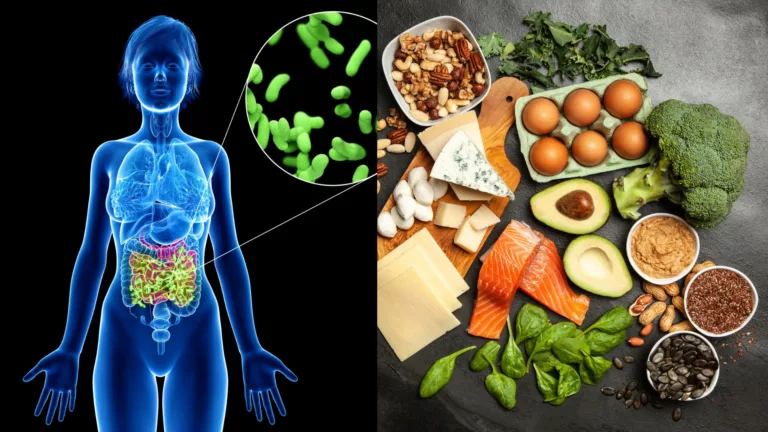It is difficult to know if you have sufficiently reduced carbohydrates in your ketogenic diet to produce ketones.
You have adopted a ketogenic diet, for example, to lose weight, treat refractory epilepsy, slow down the progression of Alzheimer’s disease or cancer, and you are unable to determine if your body is in a state of ketosis, which means if your liver is producing ketones to provide energy to your body instead of carbohydrates.
During the first week, ketosis can cause unpleasant symptoms such as fatigue, headaches, bad breath (fruity and sweet, reminiscent of acetone), thirst, and weakness. But once the body gets used to it, it is difficult to know if the body is effectively producing ketones as fuel.
Using Urine Test Strips
To monitor if you are in ketosis, you can purchase reactive urine test strips from a pharmacy, drugstore, or online. These strips are used to measure the presence of ketones in urine. There are also urine test strips available in the market that can determine the presence of both sugar and ketones.
Before purchasing any of these products (there are different brands available such as Ketostix®, Keto-Diastix®, and Keto-Diabur®), make sure to learn about their usage and how to interpret the values indicated by seeking advice from a pharmacist and/or carefully reading the instructions.
If the analyzed urine contains ketones (acetoacetic acid), the color of the reactive area on the strip will change. Most strips display a pink-purple color when the ketone level is around 15 mg/dL. The color chart printed on the packaging allows you to compare the color and determine the approximate amount of ketones present in the urine. The target value is around 15 mg/dL (1.5 mmol/L).
The Best Time to Test
The most suitable time to perform the measurements is in the early evening (in the morning, upon waking up, the ketone level in urine is generally low). Otherwise, during the day, choose a time when you have already engaged in physical activity but not immediately following intense exertion.
Different studies indicate that the more ketosis you are in, the more beneficial the ketogenic diet is. However, it is not recommended to exceed 80 mg/dL (8 mmol/L) (dark purple). If this happens, slightly increase your carbohydrate consumption and consider if you have consumed enough fluids. If you significantly exceed this level, it may be an indication that your body is having difficulty metabolizing ketones.
This situation is extremely rare, but it requires immediate examination by your primary care physician.
Limitations of the Test
Urine analysis provides only an approximate indication of the exact concentration of ketones in the blood. However, if you eliminate about 15 mg/dL of ketones through urine, it means that your blood contains a high concentration of ketones, and your body is indeed in ketosis. It is also possible to be in ketosis without it being detected in urine analysis. This occurs when the measurement is taken immediately after significant physical exertion because the cells have a high energy demand and effectively draw ketones from the blood, resulting in minimal elimination by the kidneys. You can occasionally have your blood concentration measured by your doctor.
There are also blood glucose meters available in pharmacies that can measure the concentration of ketones in a drop of blood using special strips (but these devices are relatively expensive).
Diabetic Ketoacidosis
Medical Disclaimer:
Ketones have a bad reputation because they can reach very high levels in individuals with uncontrolled type 1 diabetes, a condition known as “diabetic ketoacidosis.” However, there is a significant difference of one to ten between the ketone levels observed in cases of ketoacidosis and those generated by a low-carbohydrate diet (“nutritional ketosis”). Comparing the two is akin to comparing a flood and a rain shower. Far from being a threat to the body’s acid-base balance, nutritional ketosis is a completely natural adaptation, elegantly integrated into the body’s energy strategy whenever carbohydrates are limited, and fat becomes the primary fuel.
The information provided in this article is for educational purposes only and is not intended as medical advice. It is not a substitute for professional medical advice, diagnosis, or treatment. Always seek the advice of a qualified healthcare provider with any questions you may have regarding a medical condition or before making any changes to your diet or healthcare regimen. The use of any information provided in this article is solely at your own risk. The author and publisher of this article are not responsible for any adverse effects or consequences resulting from the use of the information provided.
References
“Blood Ketones: Measurement, Interpretation, Limitations, and Utility in the Management of Diabetic Ketoacidosis” www.ncbi.nlm.nih.gov






